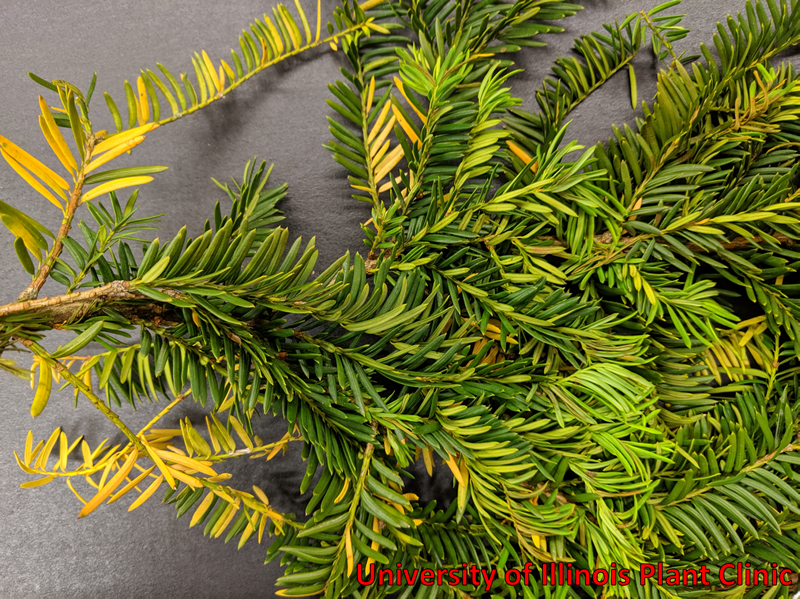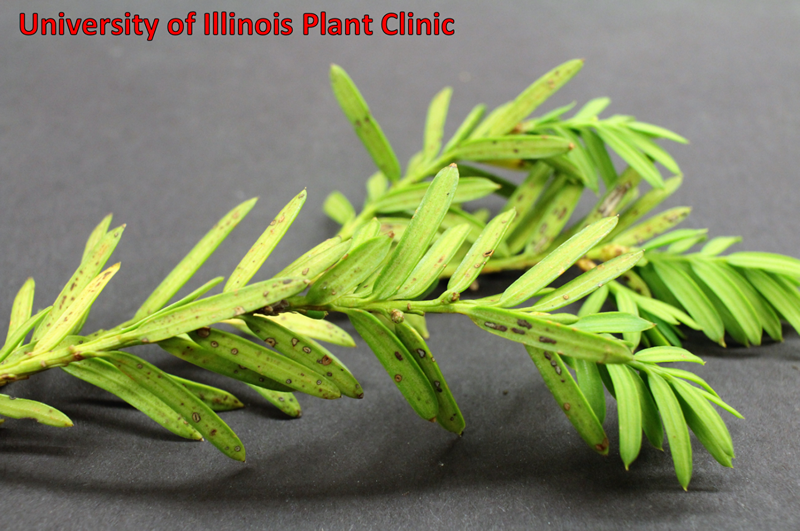Issue 4, May 31, 2019
Why are Yew so sad?

Yew plants are fairly pest-free once established into a landscape, and can be wonderful evergreen additions to the right area. However, we’ve seen several yew samples at the Plant Clinic in the last few weeks. Most of them come with pictures or descriptions of plants with needles turning bright yellow, then browning and eventually falling from the plant. When examined under the microscope, no pathogens or insect pests are found. Instead, corky bumps or blisters are observed, usually on the underside of the needle. These can be seen with the naked eye, though they may appear as spots.

This is a classic symptom of edema (oedema), a condition where more water is retained in the plant than can be used by the plant, resulting in damage to the needle tissue. Other plants can be affected by edema, but yew plants are particularly prone to this abiotic condition. In the past, we’ve had clients who mentioned they were concerned about edema and had improved drainage in the area with pea gravel and drains before installing yew plants. While these measures should improve drainage, the fact that we still find evidence of extensive damage due to edema indicates that it wasn’t enough for the yew.
Management usually consists of decreasing irrigation, increasing drainage, and trying to maintain plant vitality via fertilizing and pruning out dead wood during dry weather. Replacing the yew with more water-tolerant plants is another option for stubbornly soggy areas.
Author:
Diane Plewa